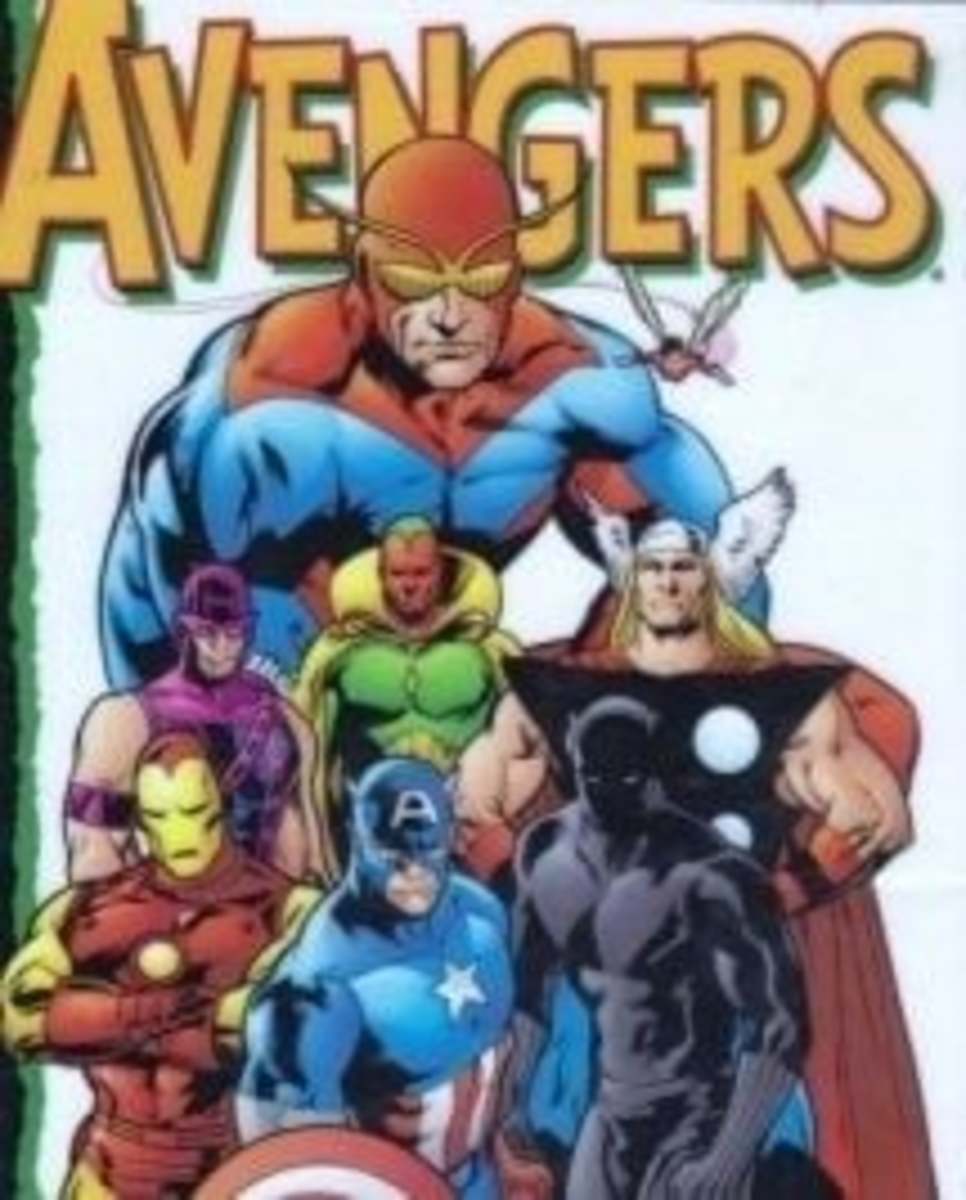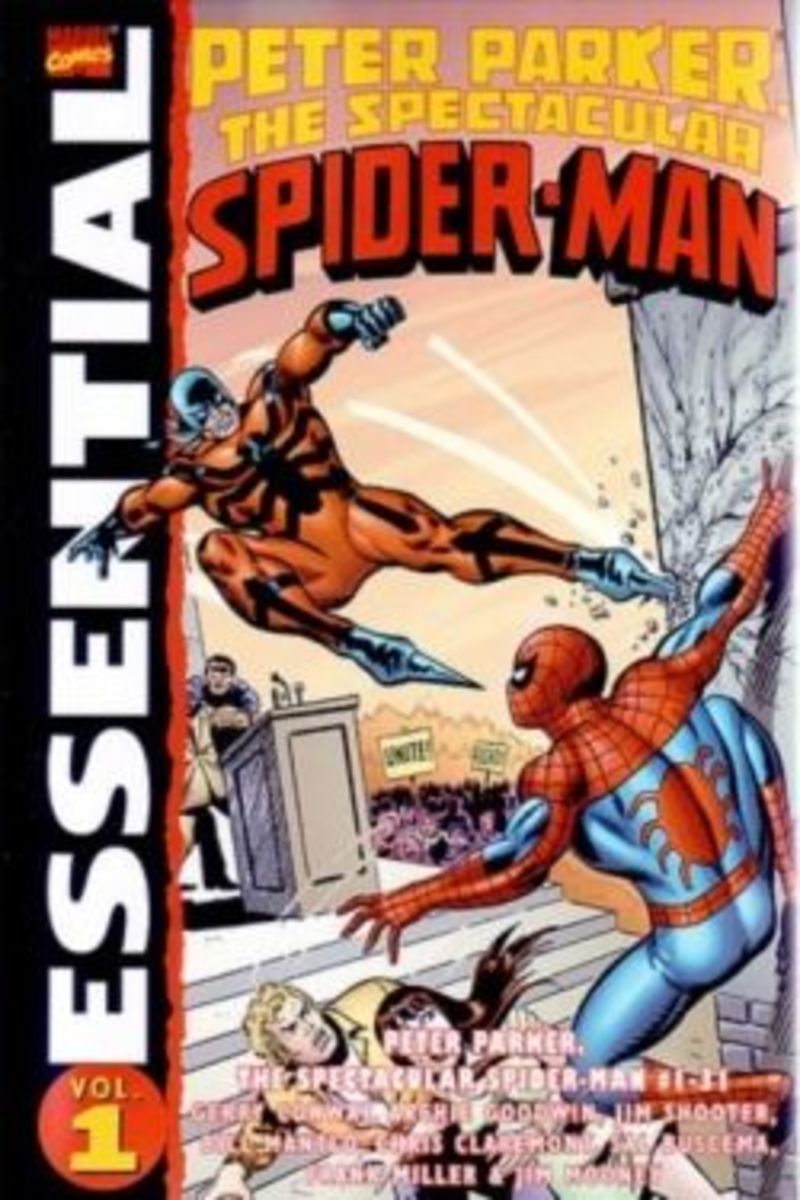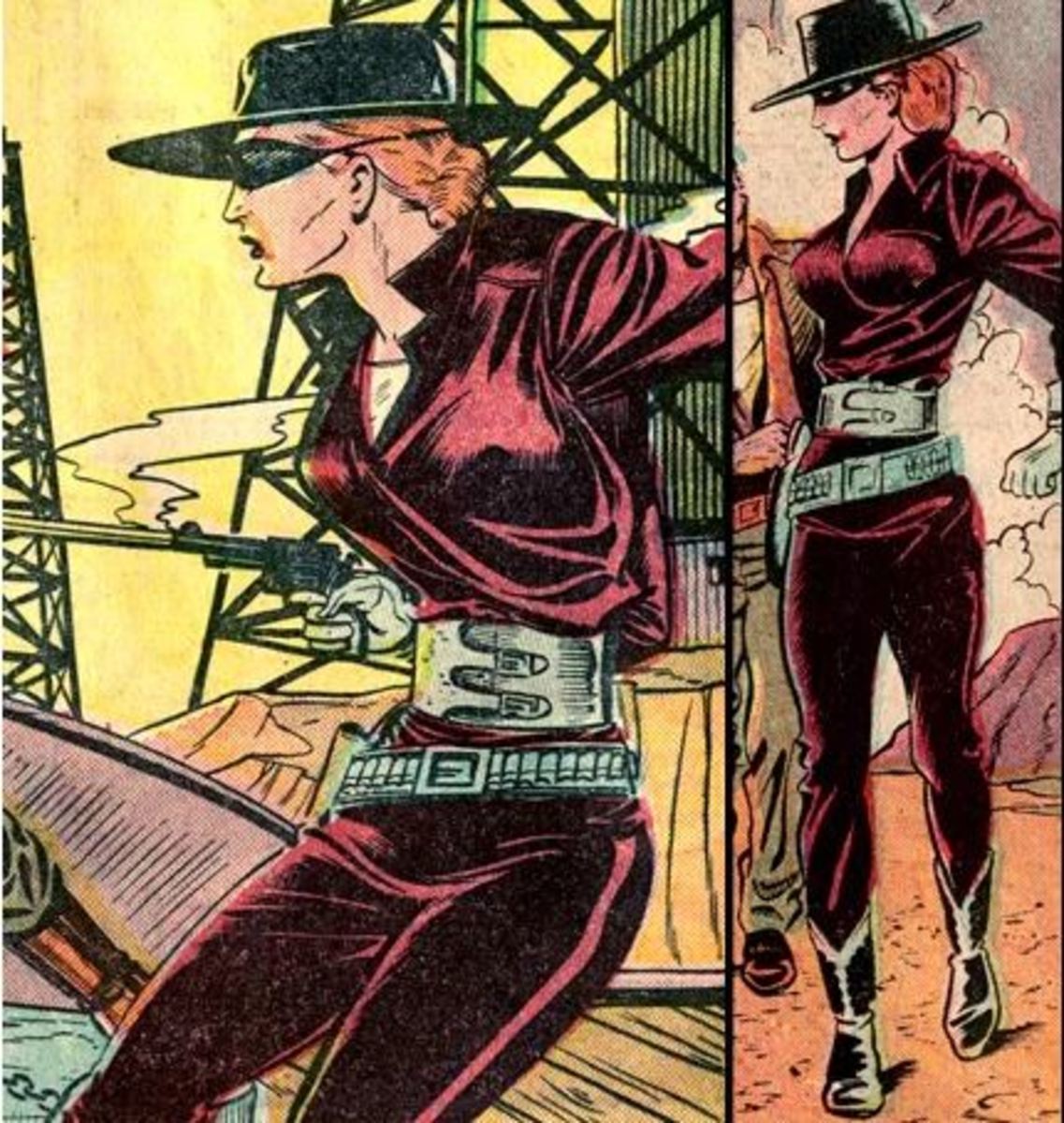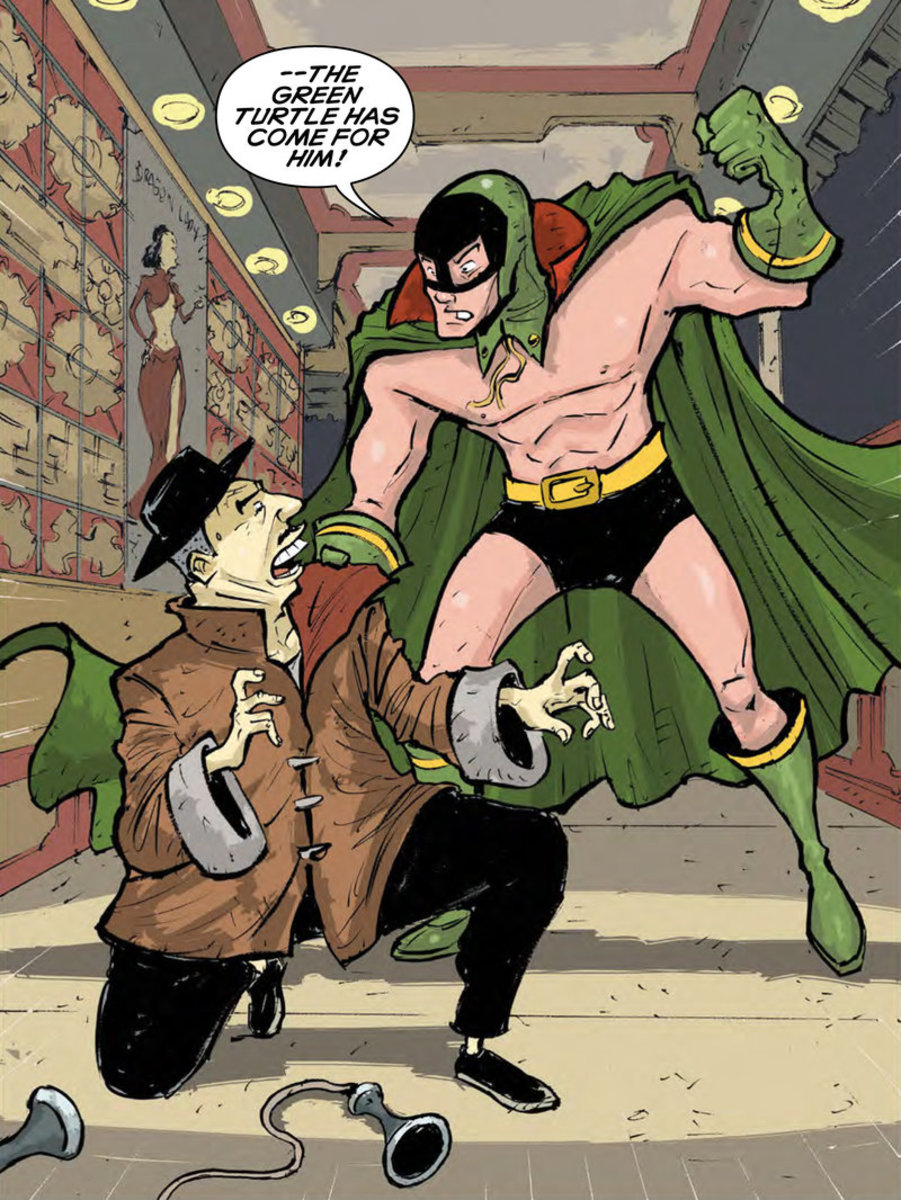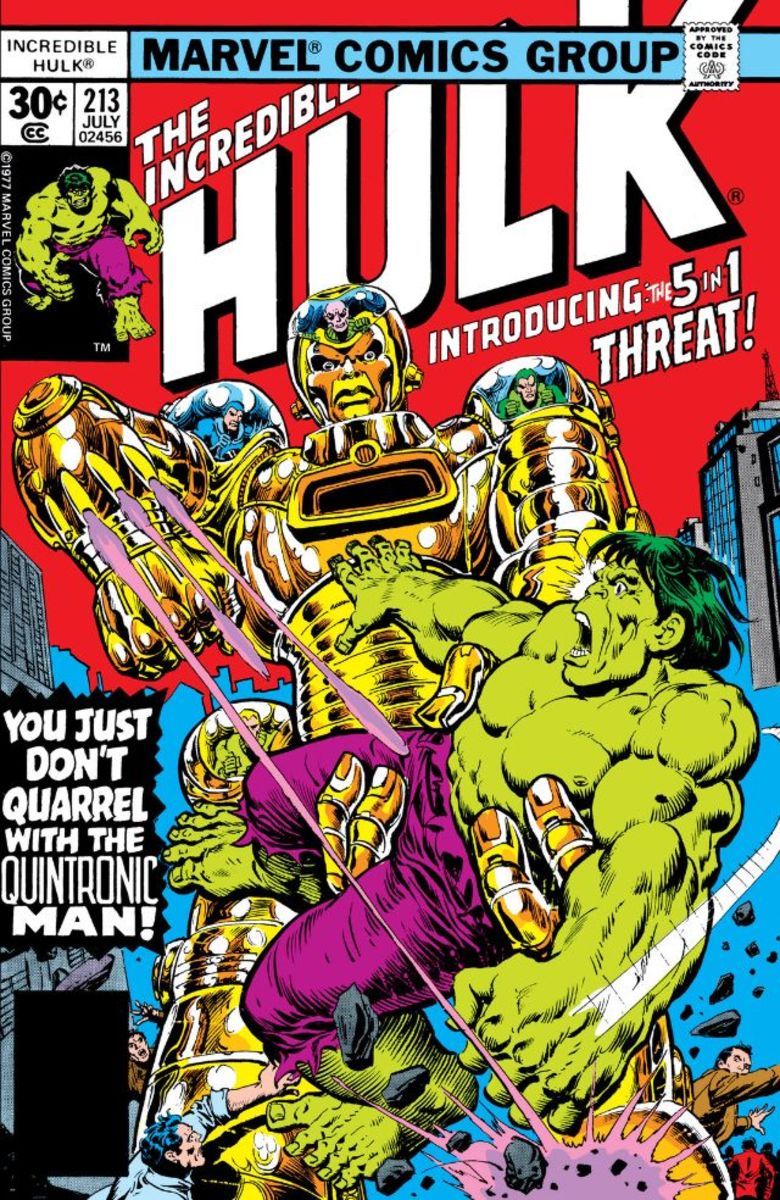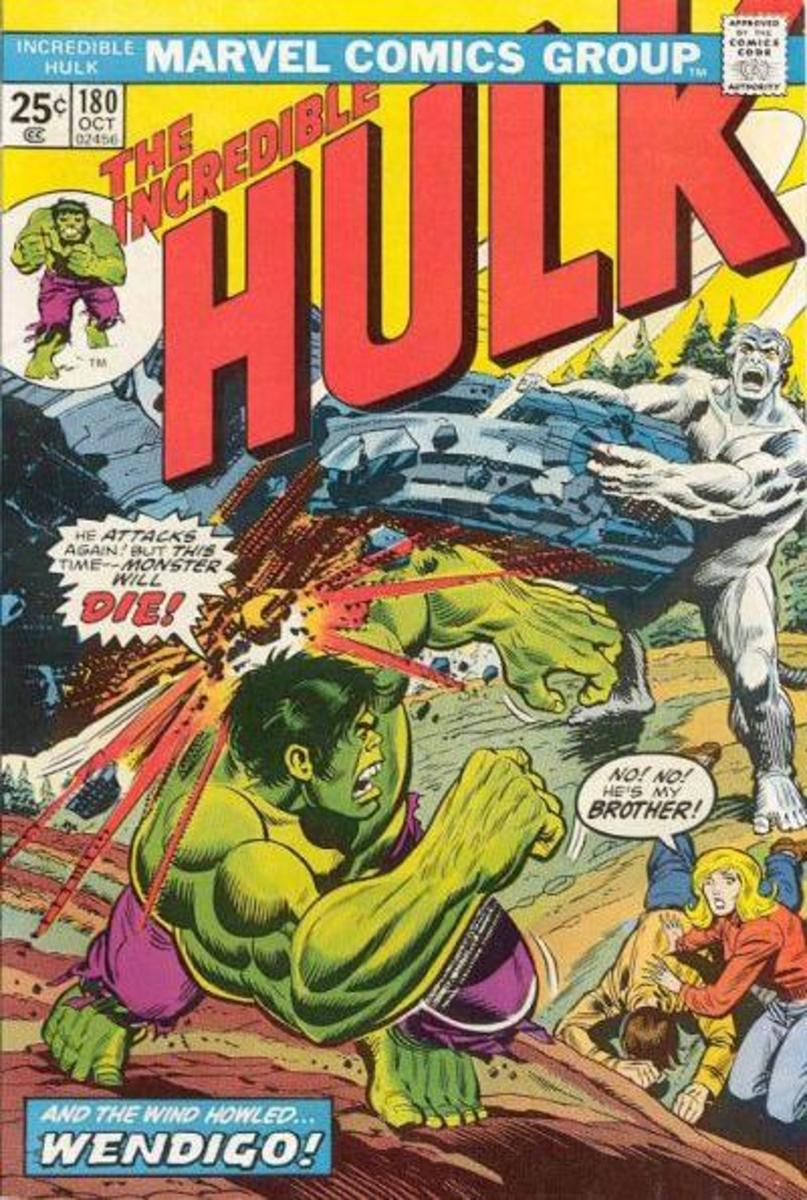10 Female Comic Book Superheros Worth Knowing
Ten Female Comic Book Superheroes
Everyone knows who Batwoman, Supergirl and Wonder Woman are but there are many other female comic book superheroes who are not as well known but play an important role in the history of comic books, down from the Golden Age right up to the Bronze Age. Many of these strong female superheroes still exist in comic book publishing in one incarnation or another, while others have disappeared into the annals of time. Here are ten female comic book superheroes worth knowing:
10. Fantomah (Fiction House) 1940
As the first female comic book superhero, Fantomah (from the word phantom) made her debut in “Jungle Comics #2” published by Fiction House Publishers in February 1940. Fantomah was everything a superhero should be: tall, leggy, athletic, and have a strong constitution. She also has a blonde Veronica Lake hairstyle, probably inspired by the World War 2 pinup actress herself. Created by Fletcher Hanks, Fantomah has supernatural powers that come in handy when she has to protect her jungle home and peoples from raiders and poachers. One unique feature of her powers is that when they are in use, her face transforms into a blue skull for only a brief time, then reverts back to her natural beauty. The blue skull definitely looks like a phantom one, one that metes out justice.
Fantomah has the ability to fly, transform everyday objects into other objects, transform other people into animals or inanimate objects, and possesses superstrength. Fantomah did not disappear when Hanks stopped sketching her, however; H. B. Hovious took over where Hanks left off in March 1942 and made Fantomah an Egyptian princess who was revived by her admirers in order to protect the jungle. This Fantomah appears in “Jungle Comics #27” and lasted up to issue #51. Not a bad stretch for a superheroine of the jungle.
9. The Woman in Red (Thrilling Comics) 1940
Another female superhero from the Golden Age, The Woman in Red was a policewoman named Peggy Allen who discovered that she could deal with criminals much better as her alter ego. Her responsibilities were more in the realm of office duties instead of being on patrol with policemen. Created by Richard E. Hughes and George Mandel in March 1940, The Woman in Red made her first appearance in “Thrilling Comics #2”, published by Nedor Comics. Peggy's costume consisted of a floor-length red cape with a hood, a red mask, and an endless supply of bullets. She was an expert in hand to hand combat and skilled as a markswoman. Being the first superheroine not afraid to use a gun on someone, The Woman in Red enjoyed a decent run on the comic book circuit until “Thrilling Comics #46” in February 1945 where she made her final appearance.
The Woman in Red was revived by Alan Moore in 2001. She appeared in "Tom Strong #11" as a member of SMASH, a team of superheroes sent into suspension of time, the result of aliens from the moon invading earth. The Woman in Red, along with the other superheroes sharing suspended animation with her, are released by Tom Strong. The new Woman in Red wears a red miniskirt, a cape but no hood, and a red mask not unlike the type worn at masked balls. She also has the power to fly and project energy and remains a strong female figure in comic books today.
8. Black Widow (Timely Comics) 1940
Considered to be the first female superhero with superpowers, the Black Widow, whose alter ego is Claire Voyant, made her debut in August 1940 in “Mystic Comics #4”. Wearing a one-piece purple leotard with long sleeves and a matching cape that resembles a billowing spider web, the Black Widow gained her extraordinary powers through an unexpected meeting with Satan after being shot dead by a client. Claire, originally a medium by trade, is now brought back to life, avenges her own death, and uses her powers to obliterate evildoers on earth.
Created by George Kapitan and Harry Sahle, the Black Widow can kill simply by touching a finger to the head of an enemy. Her human victims included corrupt arms manufacturers, mob bosses, and other criminals. The Black Widow made only five appearances in comics, the last one being in 1943, in “All Select Comics #1”. Despite her brief appearance in the Golden Age, she was later revived in 2008 as part of the Marvels team, published by Marvel Comics. The sixty-five years in between original stories with the Black Widow has not diminished her superpowers in the least.
7. Phantom Lady (Quality Comics) 1941
Phantom Lady is an extraordinary female crime fighter in Washington, D.C. Her first appearance was in “Police Comics #1” in 1941. The daughter of a senator, Sandra Knight is a socialite by day, and by night, dons a one-piece yellow swimsuit with a green cape. Her hair is long, curly and black. No doubt one of the sexiest costumes of the Golden Age, Phantom Lady is an expert in hand-to-hand combat and uses a black light ray to make herself appear invisible while hunting down criminals.
Created by Jerry Iger and Will Eisner, Phantom Lady made her way into Fox Feature Syndicate, Ajax-Farrell Publications, Charlton Comics, and eventually DC, giving her a decent lifespan from the Golden Age down to the Bronze Age. Phantom Lady was popular enough to create spinoff characters such as Silk Spectre and The Blue Bulleteer. The original Phantom Lady, like a number of other Golden Age comic book characters, is now in public domain.
6. Miss America (Quality Comics) 1941
Miss America first appeared in “Military Comics #1” in 1941. Joan Dale, the alter ego for Miss America, became a superhero through having a rather unusual dream. In this dream, which took place while she napped on a bench near the Statue of Liberty, she desired to possess the ability to do something beneficial for her country, the United States. In turn, the Statue of Liberty came to life and granted her magic powers to help stop crime and fight the World War 2 axis. Eventually quitting her job as a reporter for the Daily Star and devoting herself full time as Miss America, she joins the FBI through an agent by the name of Tim Healy.
Created by Elmer Wexler, Miss America did not have a single regular costume but instead wore outfits that usually bore red, white and blue as a mix, or sometimes just one of these colors. Her powers included, but were not limited to, changing the appearance of matter, transform her enemies into objects, and flying. She only appeared in seven issues of Military Comics, but was revived by DC in the 1980s. Like Wonder Woman, Miss America remained an important female superhero during the World War 2 era, the only difference being in her powers and costumes. The Miss America of Quality Comics remains in public domain although the DC version does not. The Miss America of Marvel comics during the Golden Age is not in public domain, either.
6. Black Fury/Miss Fury (Timely Comics) 1941
Originally named Black Fury, Miss Fury was one of those superheros who got her start as a newspaper comic strip, and a year later, getting her own comic book from Timely Comics in 1942. The first issue was simply titled “Miss Fury.” Created by June Tarpe Mills, one of the very few women in comic book publishing during the Golden Age, Miss Fury's alter ego was Marla Drake, a socialite who is trying to find her place in the world. One night she is to attend a masquerade ball, and decides to wear an African ceremonial leopardskin costume left to her by her uncle. Not knowing what effect the costume has upon her, Marla never arrives at the ball. Instead, she is detained while trying to apprehend a murderer. This experience leads her to become a crime fighter, wearing the same costume every time she is on call.
Miss Fury has no superpowers, but she does possess exceptional athletic and detective abilities. One of her devices that she uses in deaing with criminals is a whip, in addition to her spiked heels. While her self-titled comic book lasted for only eight issue, she did make one appearance in “The Saint #6”, while her newspaper strip lasted until 1952.
5. Nightshade (Charlton Comics) 1966
A Charlton Comics superhero, Nightshade's alter ego was Eve Eden, a woman whose father, like Phantom Lady, was a United States senator. Created by Dave Kaler and Steve Ditko, Nightshade was one of few superheroes marketed in the Charlton line, a publisher better known for their horror-style comic books. Nightshade first appeared in “Captain Atom #82” in 1966, wearing a black swimsuit with a pleated mini-skirt and black and yellow mask. To further disguise her appearance, Eve would put on a long black wig. Nightshade was an expert in the martial arts but would also utilize her special powers to fight evil.
One of Nightshade's special abilities was melting into shadows, making her appear invisible to her enemies. Her powers are of genetic origin from her mother Magda, an extra-dimensional alien. This ability makes it possible for Nightshade to battle and conquer ghosts and other evil spirits who try to inhabit the earth. Nightshade's appearances in Charlton Comics lasted only for a year until issue #89 in December 1967. The character was revived by DC when this publishing line bought out Charlton's superheroes in 1983, two years before Charlton went out of business.
4. Moon Girl (EC comics) 1947
Moon Girl first came on the scene in 1947 in an issue of Entertaining Comics (EC). The title of the comic book which marked her first appearance was “Moon Girl and the Prince #1”. Created by Max Gaines, Gardner Fox, and Sheldon Moldoff, Moon Girl played a significant role in the genre of comics for EC in that she was the first character that led the publishing company to have an edge in creating horror comics. As a superhero, Moon Girl gains her powers from a moonstone passed down by the women in her family which allows her to have super strength, flying ability, and mental telepathy.
As Claire Lune, she was born in Samarkand of royal lineage. She wears her long dark hair pulled back in a fashionable bun at the nape, and her costume is red, yellow and blue sleeveless bodysuit with a space-like collar, and a yellow crescent on her blue shorts. Moon Girl is a superior crime fighter compared to men, but once she met Prince Mengu, who was her equal in strength, Moon Girl wanted to partner with him in fighting cime. Moon Girl made eight appearances during the Golden Age of comics and her character subsequently fell into public domain.
3. Saturn Girl, (Adventure Comics) 1958
Saturn Girl is a Silver Age superhero from the future who made present-day earth her home. Created by Otto Binder and Al Plastino, her first appearance was in “Adventure Comics #247.” Coming from the 30th century, her home world was Titan, one of Saturn's largest moons. Saturn Girl was one of the founders of the Legion of Super-Heroes. Like other members of her race on Titan, Saturn Girl has exceptional mental telepathy powers. She is able to read the minds of people who are far away, the minds of animals, as well as influence other people's thoughts and emotions.
Saturn Girl is a member of the Science Police, a galactic military branch of the United Planets, with earth being one of its members. Saturn Girl's alter ego is Imra Ardeen. The girl from Titan originally wore a red and white bodysuit with a yellow emblem of Saturn on the front, along with thigh-high white boots. Known for her altruistic nature, Saturn Girl once saved Superman's life when he was at the mercy of Lex Luthor and the Legion of Super-Villains. She still makes appearances in DC Comics.
2. Scarlet Witch (Marvel Comics) 1964
Scarlet Witch was created by Stan Lee and Jack Kirby for Marvel Comics and is one of the most continuous superheroes, lasting for five straight decades in regular comic series as well as her own self-titled limited series. First appearing in “The X-Men #4” in 1964, Scarlet Witch wears a strapless scarlet costume, wimple, and billowing cape. She is a mutant who was born in Transia. Her alter ego is Wanda Maximoff. With her unique superpowers, Scarlet Witch can change reality and cast hexes. She can also create force fields, open sealed doors, deflect flying objects headed for her, and explode objects using her mental powers.
Scarlet Witch eventually joined the Avengers superhero team, appearing in “Avengers #16” in 1965. She continues to appear in Marvel Comics, notably “Uncanny Avengers”.
1. Mary Marvel (Fawcett Comics) 1942
As the sister of Captain Marvel, Mary Marvel made her first appearance in “Captain Marvel Adventures #18” in December 1942, published by Fawcett Comics. When she was not Mary Marvel, she was Mary Batson, Billy's twin sister. Like her brother, her powers derive from pronouncing the word “Shazam!”, transforming her into a superheroine. Mary Marvel is the creation of Otto Binder and Marc Swayze. For Mary Marvel, her powers are derived from six Greek deities: Selena, Hippolyta, Ariadne, Zephyrus, Aurora, and Minerva. She has the ability to fly, possesses super strength, vast wisdom, invulnerability, and self-healing.
Mary Marvel remains one of the first female counterparts to a male superhero, more than a decade before Supergirl was introduced by Action Comics. Mary's costume was the same color red as Captain Marvel's, with gold trim along the hemline of her miniskirt and neckline, with the unmistakeable bolt of lightning on the chest. Along with Captain Marvel, Mary Marvel is now a member of the DC Comics pantheon, appearing in “Power of Shazam!”, “Infinite Crisis”, “Trials of Shazam”, and “Final Crisis.”


